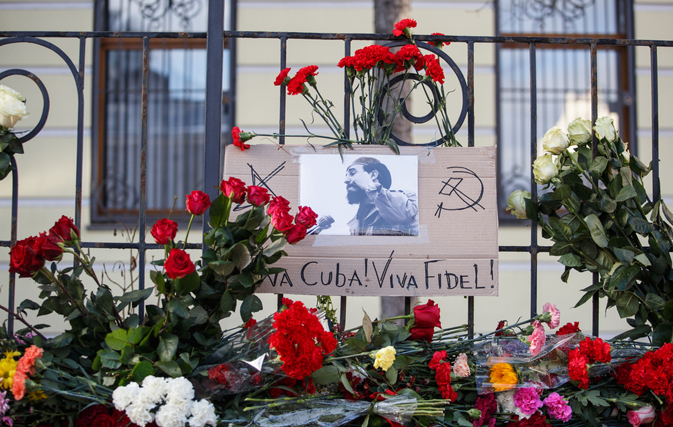HAVANA — The first regularly scheduled commercial flight in more than 50 years from the United States to Havana has landed, but the flight’s arrival comes as Cubans began week-long memorial services paying homage to revolutionary leader Fidel Castro.
American Airlines held a small celebration before the flight departed from Miami and gave passengers straw hats that said “ Cuba” on the back. Forty-five-year-old passenger Tamara Cara says the flight’s landing was emotional for many.
U.S. flights to other cities in Cuba began earlier this year and the number of Americans visiting the island has increased rapidly, though from a low base.
After Fidel Castro died over the weekend, thousands of Cubans are lining up early near Havana’s Plaza of the Revolution for the start of week-long services bidding farewell to the man who ruled the country for nearly half a century.
Memorial services are slated to begin Monday at 9 a.m. when simultaneous 21-gun salutes will sound in the capital and in the eastern city of Santiago, where Castro launched his revolution in 1953.
“There’s a genuine feeling of mourning, that’s not a formality, that’s not showy, that’s not outward-focused, but rather completely intimate,” former National Assembly President Ricardo Alarcon said on state television Sunday.
Ordinary people have largely been staying at home, off streets hushed by a prohibition on music and celebration during the nine days of official mourning for Castro. For some, particularly younger Cubans, Castro’s death barely registered.
As Cuba prepares a massive commemoration for the leader of its socialist revolution, tens of thousands of high-season travellers have found themselves accidental witnesses to history — and smack in the middle of a sombre city that’s little like its usual exuberant self.
“Who knows what tomorrow or after nine days brings in terms of the country and what happens for the future,” said Graham Palmer, a 36-year-old financial director from London. “And I think we will certainly look back at the airport tomorrow and feel quite privileged that we’ve been here.”
“We picked up the (Communist Party) Granma paper from yesterday, so we’ve got that,” said his companion, 36-year-old marketing worker Emma Taylor.
“I think we could quite even think about framing it,” Palmer interjected. “It’s quite poignant.”
Yet they and other travellers said that in addition to the awe at being present as Cubans honour one of the 20th century’s most influential leaders, there’s a tinge of regret at seeing such a subdued Havana.
Many museums have closed their doors, and a state-sanctioned ban on live music has shuttered concerts and nightspots including the famed Tropicana nightclub. Old Havana these days is eerily devoid of the roving troubadours whose Buena Vista Social Club croonings normally echo through the cobblestone streets. And the 1950s classic cars that function as collective taxis are doing without the usual reggaeton at max volume.
Martin Sawicki, a 34-year-old accountant from Warsaw, Poland, said he was unable to visit the University of Havana or the Revolution Plaza, where Castro’s ashes are to be on display starting Monday. Workers there have already cordoned off access to the towering monument to independence hero Jose Marti.
Meanwhile a citywide ban on most alcohol sales means those savoring Cuban cigars for the first time have to do so without the traditional accompanying snifter of rum.
“They tell us, sorry but we are not serving beer,” said Sawicki. “It’s a little bit annoying because we would like to have a glass of beer in the evening.”
More than 3 million tourists visited Cuba last year, and the government expects even more this season as interest explodes due to detente between Havana and Washington.
